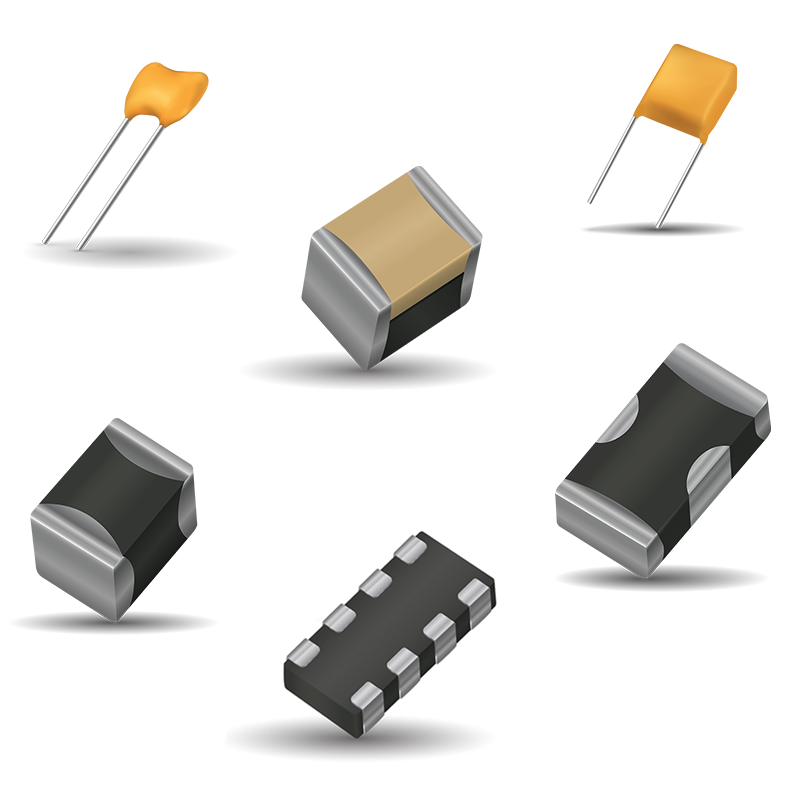Overview
Do varistors and gas discharge tubes operate the same way, and what are their respective advantages and disadvantages? Do common-mode and differential-mode inductors affect EMC? Why are X capacitors and Y capacitors used, and can they be interchanged? Where is it appropriate to place an NTC? This article summarizes common EMC peripheral components and key selection considerations.
1. Varistor
Key parameters for varistor selection are maximum continuous voltage, maximum clamping voltage, and surge current capability.
First, ensure the varistor's maximum continuous voltage exceeds the maximum supply voltage. Second, ensure the maximum clamping voltage does not exceed the downstream circuitry's allowable surge voltage. Finally, ensure the surge current through the varistor does not exceed its rated surge capability.
Other parameters such as rated power and peak pulse energy can be determined by basic calculations or testing.
Note that varistors exhibit performance degradation over time.
2. Gas discharge tube (GDT)
GDTs are switching-type devices. Compared with varistors, they have differences such as longer conduction delay, the need for follow current after breakdown, lower inter-electrode capacitance, higher insulation resistance, and lower leakage current. They are often used in series or parallel with varistors. For example, a series GDT can mitigate varistor leakage current or long-term degradation; a parallel GDT can accelerate protection response and absorb most of the surge current after breakdown.
3. TVS
As another protective device, TVS diodes respond faster than varistors and GDTs but typically have lower surge-handling capability. TVS devices act as clamping devices with more stable clamping voltages. They are commonly used for electrostatic discharge protection and can be combined with varistors or GDTs for staged surge energy dissipation.
4. X capacitor
X capacitors are safety-rated capacitors placed across the line (L) and neutral (N) to filter differential-mode interference. They are relatively large, allow higher ripple current, and have higher voltage ratings. Choose X1, X2, or X3 types according to application. For example, an X2 capacitor is typically used where mains transient voltage <= 2.5 kV.
5. Y capacitor
Y capacitors are usually placed between primary and secondary circuits or between the primary and protective earth to filter common-mode noise. Their capacitance is kept small to meet leakage current requirements.
Y capacitors are classified as Y1, Y2, Y3, Y4, with different pulse voltage withstand capabilities. They must have adequate electrical and mechanical margins to avoid breakdown or short circuits that could endanger safety.
6. Differential-mode inductor
Differential-mode inductors are typically used to filter low-frequency interference. During differential-mode surge tests they can store and then release some energy. In output-side ESD tests they can behave similarly. If a differential inductor is placed after a bridge rectifier, be cautious that energy release could generate high voltages that damage the rectifier.
7. Common-mode inductor
Common-mode inductors are normally used to filter high-frequency interference. During common-mode surge tests, clamp devices can be paralleled across the winding or discharge notches can be added to prevent arcing that would affect circuit operation.
Incomplete coupling between the two windings can create a differential-mode inductance.
8. NTC thermistor
To prevent excessive inrush current on cold start, an NTC is often added in the front-end circuit. If the NTC is placed between clamp devices and the fuse, differential-mode surge testing may burn it out. If placed after clamp devices, the fuse may blow, so avoid fuses with too fast a blow time or too low a current rating.
9. Example
For an AC-DC switching power supply surge test where a 6 kV common-mode voltage is applied between ACL-PE or ACN-PE, the equivalent path is a voltage source with about 12 ohms internal resistance in series with the common-mode inductor and Y capacitors. If Y capacitors are Y1 class with high withstand voltage, the surge energy may be insufficient to damage them, so maintaining spacing between PE wiring and other wiring can be sufficient.
However, during testing the high voltage across the common-mode inductor may cause arcing that affects nearby components. A varistor paralleled across the inductor can limit its voltage and suppress arcing. To reduce cost, discharge notches are an alternative.
10. Conclusion
This article briefly described common components used in EMC peripheral circuits for switching power supplies. EMC peripheral designs should be adapted to product requirements, and selected components must be validated by appropriate testing. Most importantly, follow established selection criteria to avoid situations where only prototypes meet test requirements while production units exhibit failures.
 ALLPCB
ALLPCB








